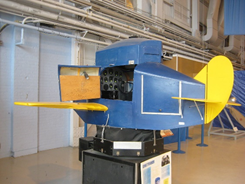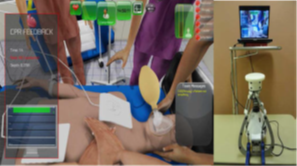By Nicole Wylie
Introduction
Instruction designers (ID) develop educational experiences. This task comes with the challenges of developing a product that is user friendly in a timely manner. Storyboarding is a tool that instructional designers use to deliver instructional designs and experiences through a linear sequence of images. These images visually predict and explore a user’s product experience. Storyboarding can aid to streamline the creation of instructional products. Ideally storyboarding is the solution for instructional designers to enhance their workload; however, that may not be the case. It is important to compare the benefits of storyboarding to the disadvantages, allowing instructional designers to determine if the process will benefit them.
Advantages of storyboarding in ID
Storyboarding is known to solve problems that instructional designers face in their everyday workload. The two main problems ID faces are:
- Slow turn-around time.
- Lack of guidance from subject matter experts (SME).
A solution for both of these problems lies within storyboarding.
Slow turn-around time
Instructional design involves two groups of people—IDs and SMEs. Both parties have very different jobs and are required to find common time to work on a project, causing difficulty in collaboration. This process becomes increasingly difficult when both parties come from different departments or companies. Traditionally, once an ID project has begun development, changes are difficult to make due to the nature of the project, causing an slower output when designers have to backtrack.
Storyboarding is a way to streamline a lengthy communication and development process by creating a visual representation of the learning process. This allows a SME to look at an instructional product and point out errors, and places in need of improvement. A storyboard structure will limit communication errors that will hinder the development process. It is easier to change content in a storyboard, than in an instructional product. Before finalizing a product, this is the most efficient way to work out any issues an instructional designer may face after development has begun.
Lack of guidance
Due to the communication issues instructional designers face with SMEs, there also is a lack of guidance on the content they are developing. Instructional design is a field where many of the developers on not well versed in the content they are creating. With that, their SMEs often don’t dedicate time for questions and clarification. Storyboarding can help with that process.
By creating a visual map of your instructions, it is easy to point out areas where you need clarification, or issues in the users learning process. By having this map, you can easily share where you need guidance with little explanation. This can also help the designer develop questions that will help the overall process before a meeting, to ensure there isn’t an overwhelming need for back and forth the SME may not have time for.
Constraints
With the advantages of storyboarding to develop ID there are also disadvantages to the process. As the solution solves major issues in the process it develops others.
The two main issues surrounding ID and storyboarding are:
- Lack of software.
- Linear output.
For storyboarding to work there are assumptions about the ID development process that may not be true.
Access to storyboarding software
For professional instructional designers a company will give them a set of tools needed to do their jobs correctly. Seldom will an organization feel it is beneficial to invest in storyboarding software and training to develop content. With that, there is no software dedicated specifically to ID. The designer would have to invest their own money in it, and use a program that is made for film. That step would cause further issues as one member of a team would be working separately. Unless storyboarding is a solution a company is invested in or the designer is freelance, the process will not work.
Linear output
Storyboarding is a linear process causing a linear output. This approach to learning can hinder the user’s experience. A concept may be best presented in a matrix fashion where learning points can be cross-referenced or taught parallel to one another, in order to enhance an understanding of concepts. The design is not always going from point A to point B.
Conclusion
Storyboarding can be a useful tool in the world of ID but it is not for everyone. If a designer is creating a learning process that is best developed in a linear fashion, while having access to the correct software, it can help the ID development process in a positive way. Creating a storyboard when it does not best fit the learning plan can cause issues in development and user interaction. It is up to the designer to research and determine what development practice is best for them to make the most impactful user experience.
References
Sunil Kumar B. “Creating e-learning Content Storyboard Based on Instructional Design Principles”. 2013 https://www.omicsonline.org/open-access/creating-e-learning-content-storyboard-based-on-instructional-design-principles-2165-7912.1000156.php?aid=16139
Cultta, Richard. “storyboarding”. 2018 http://www.instructionaldesign.org/concepts/storyboarding/
Bio:
Nicole is currently completing a Graduate Certificate in Technical Communications at Seneca College, after receiving an undergraduate degree at York University in Professional Writing. She is excited to transition into the field of Technical Communications. Outside of writing, she is interested in Art History and enjoys reading.






